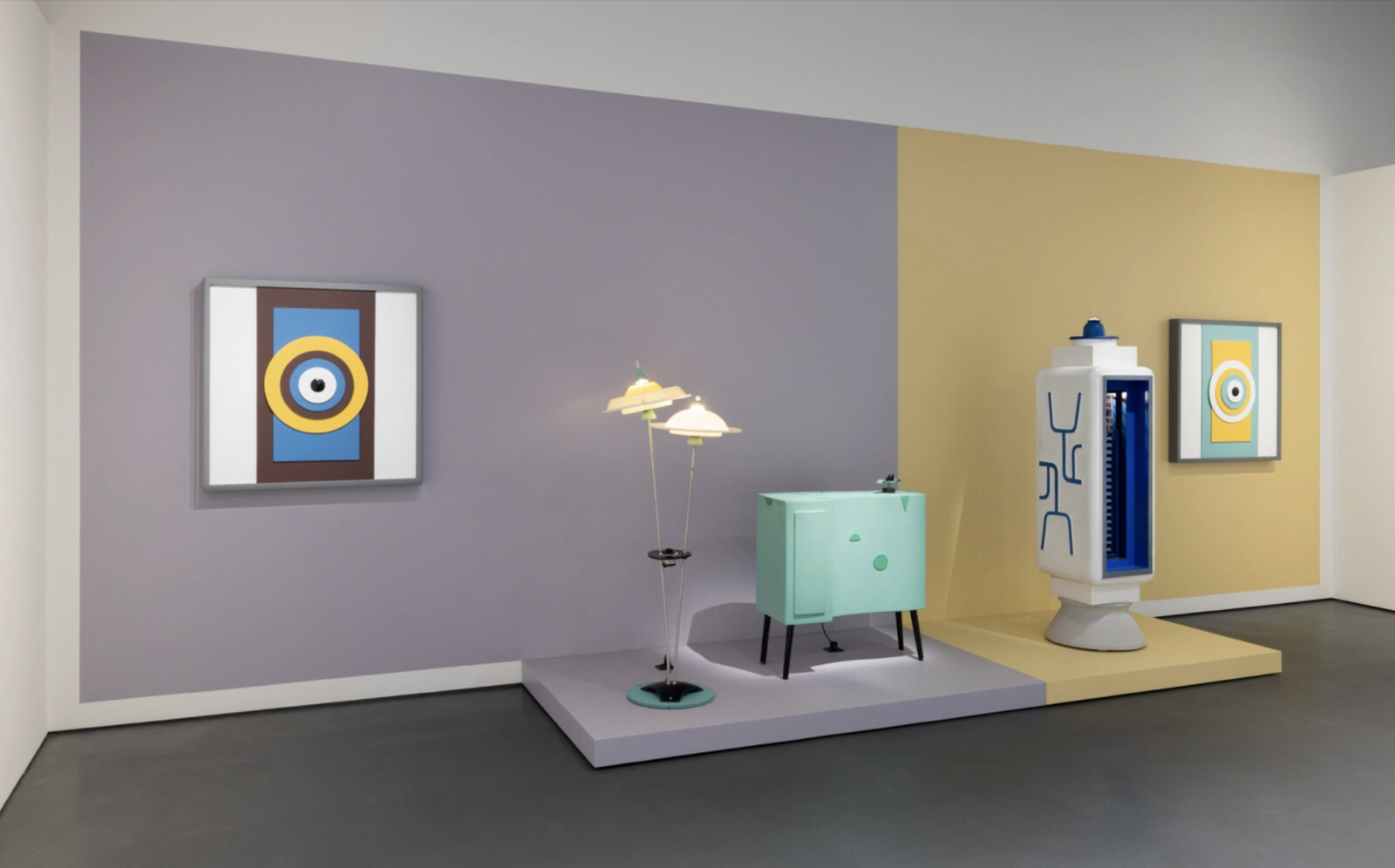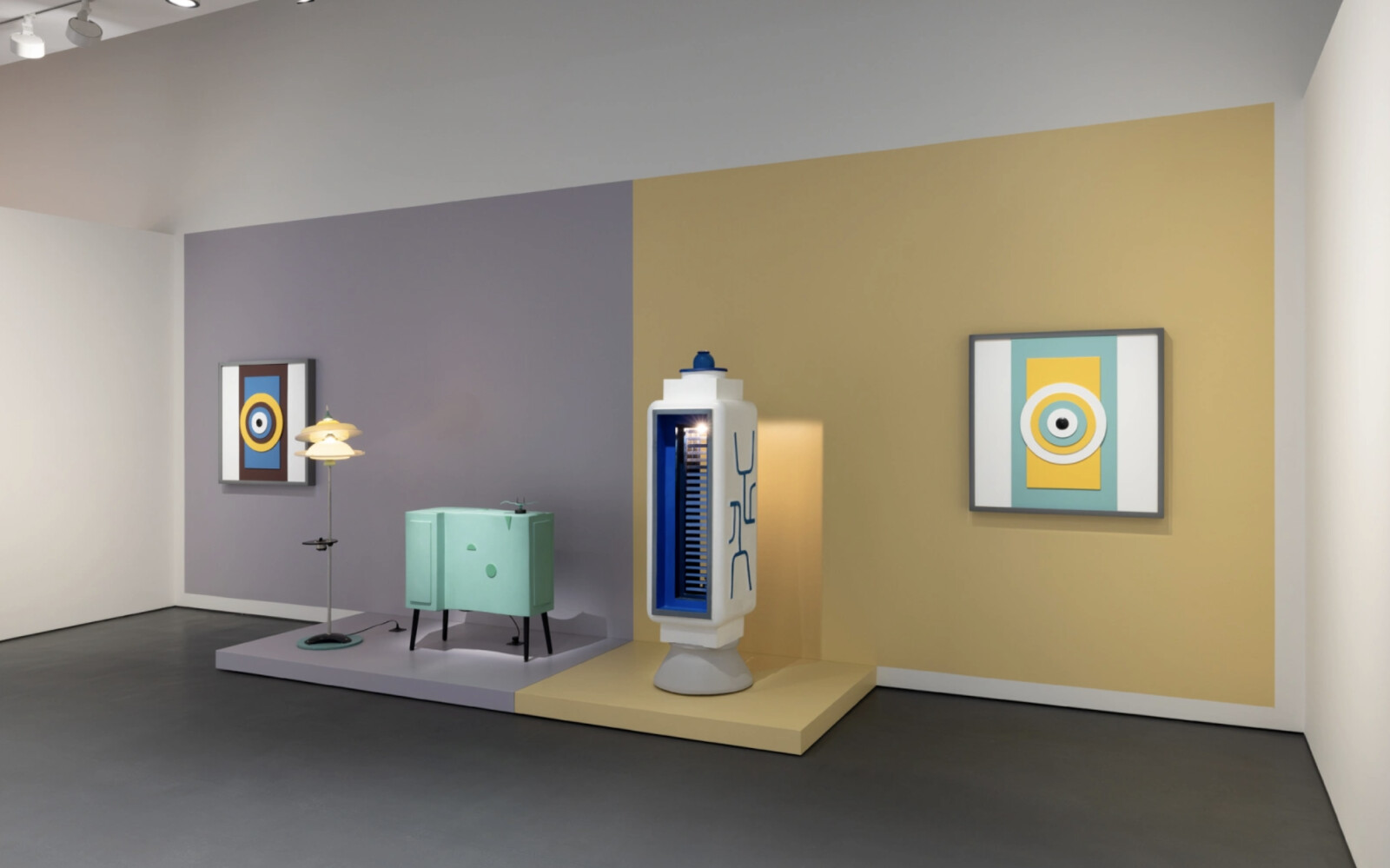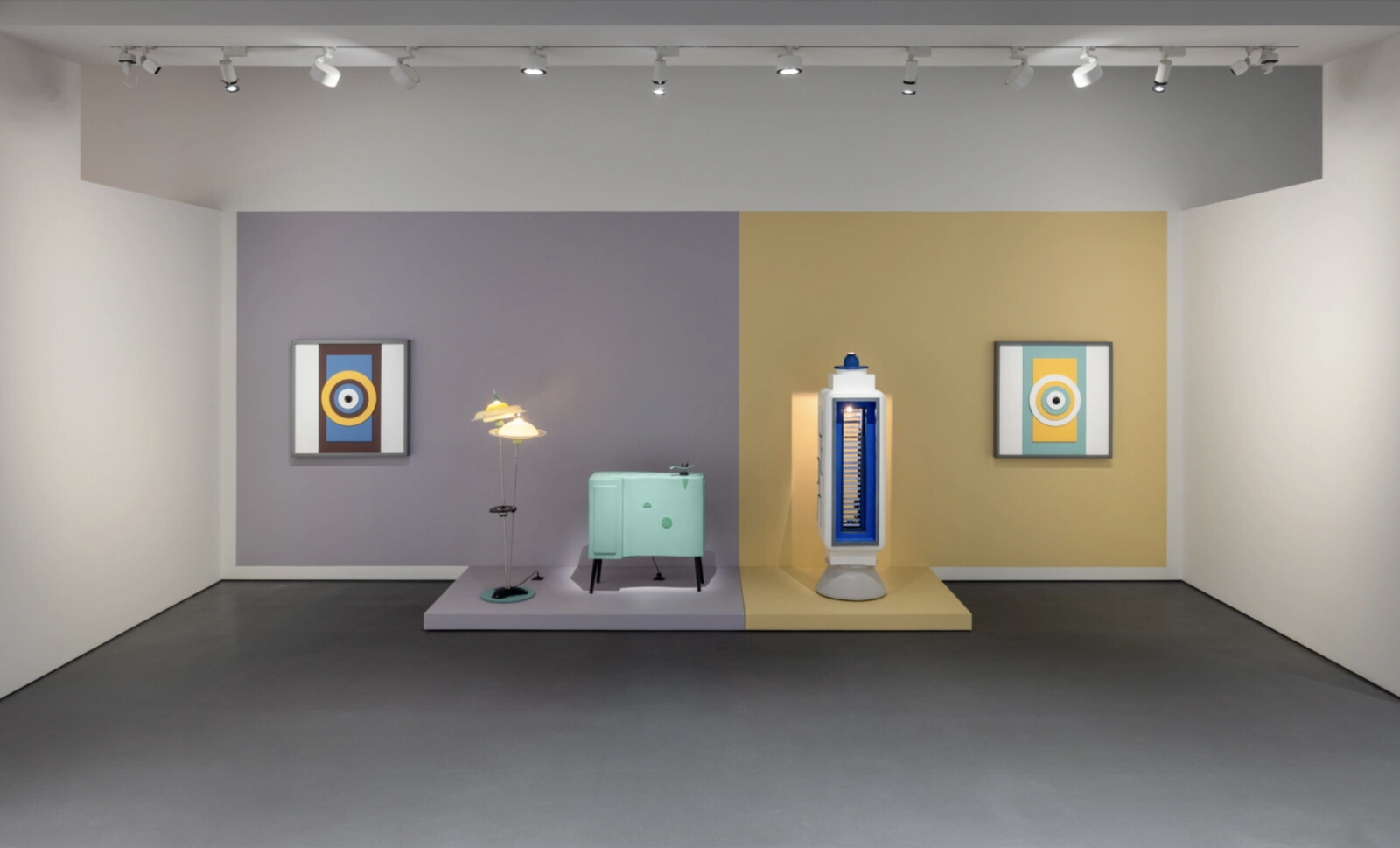Kaarel Kuurismaa at Esther Schipper, Berlin
-
selected works
View: ,
'A Timer'
ready-made, wood 90×90cm 2013
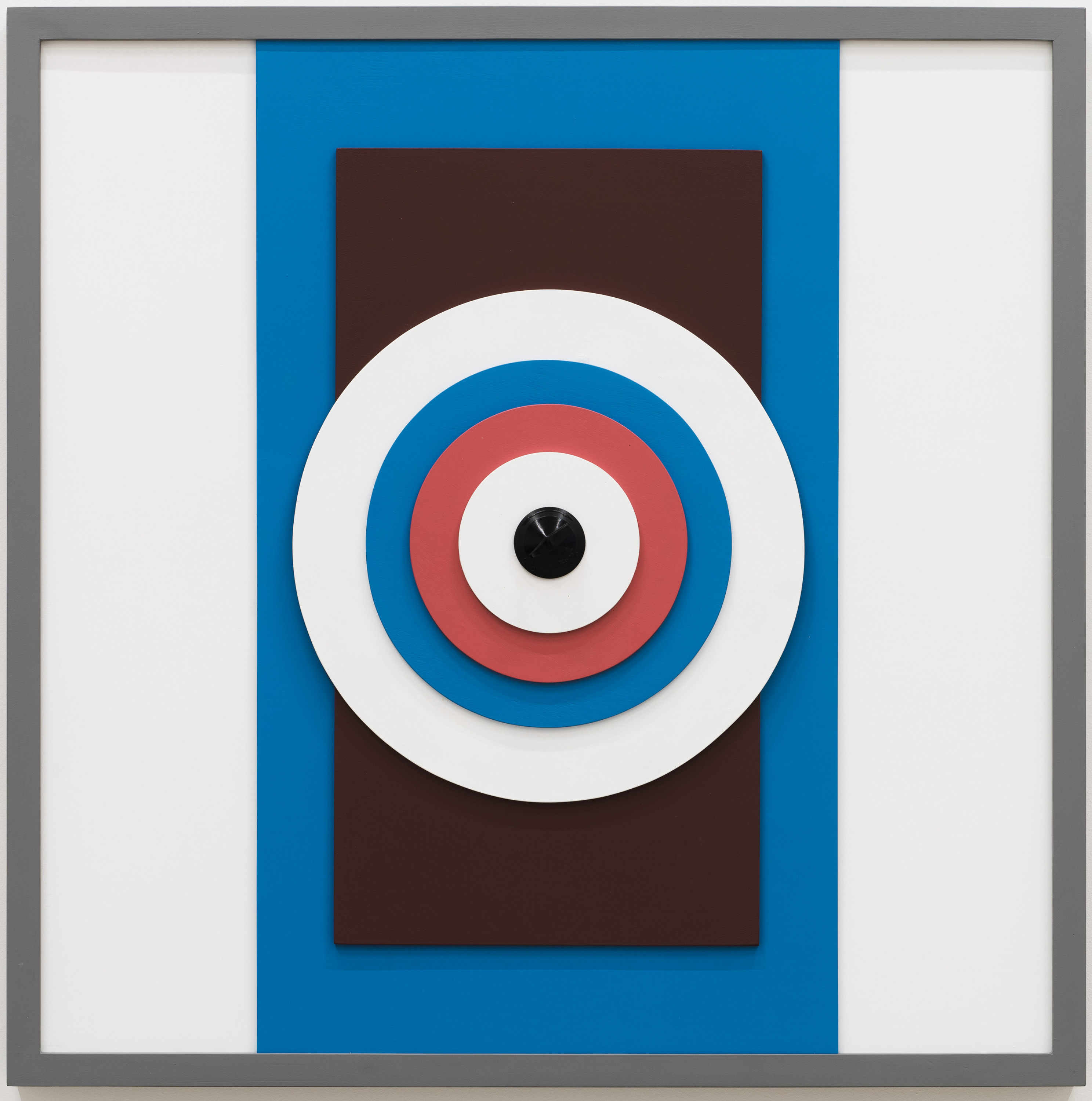
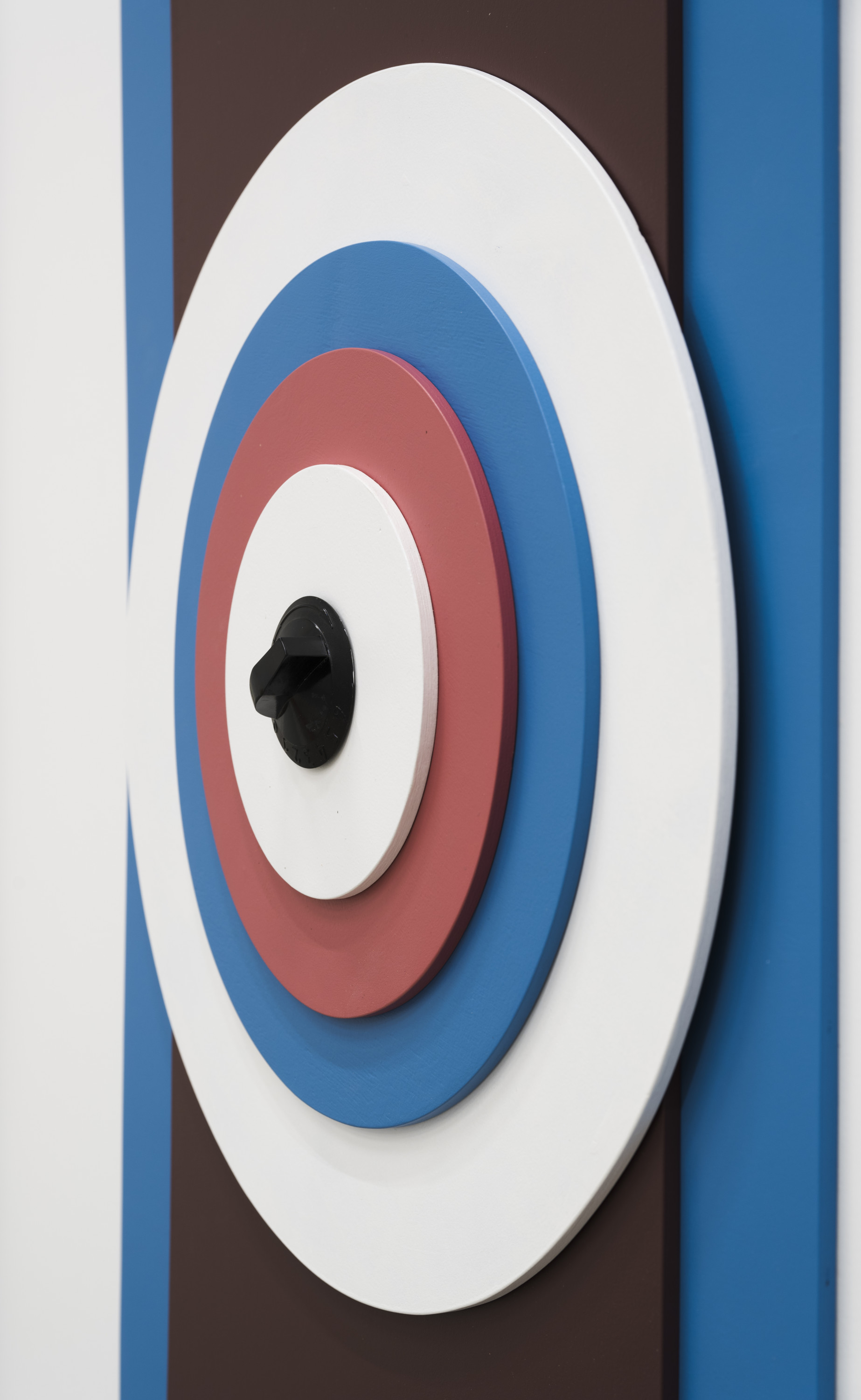
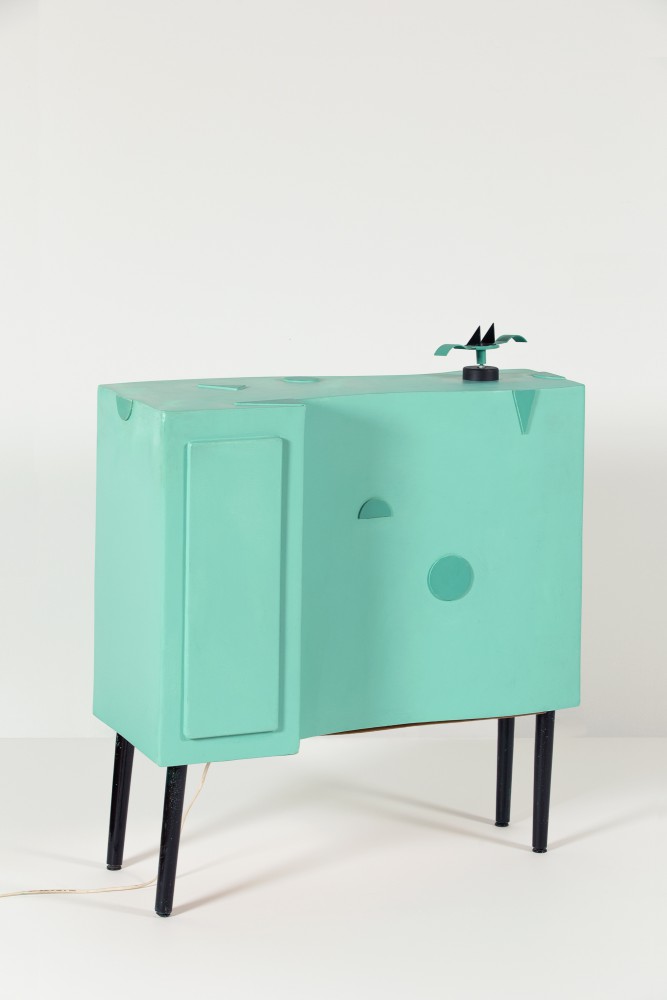
'Green Wind (Mobile I)'
ready-made, metal, electronics 81×83×36cm 1986
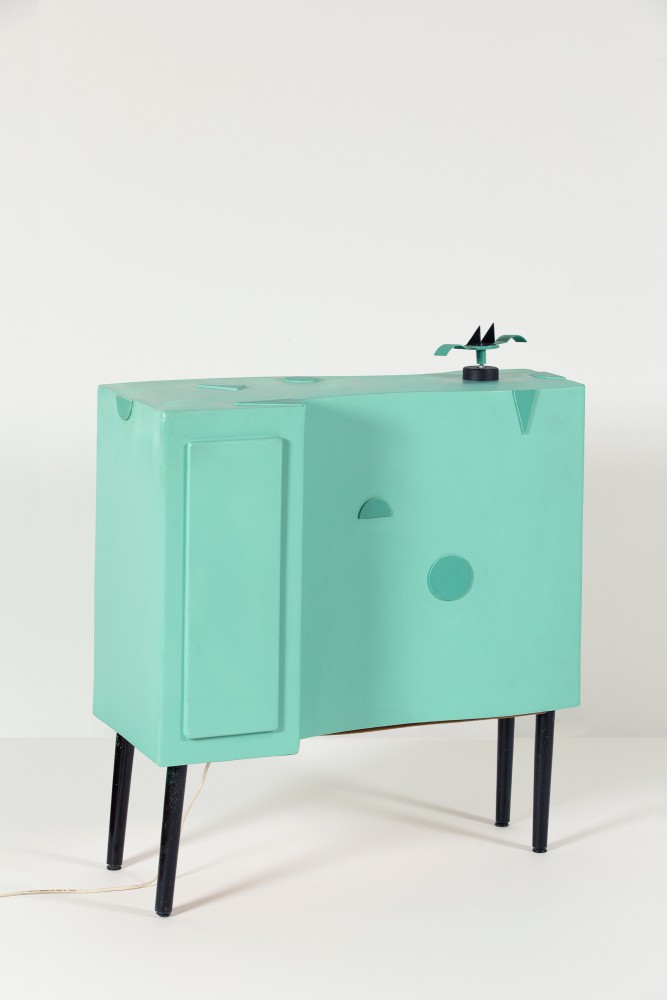

'A Growler'
ready-made, plastic, electronics 173×50×5cm 1993
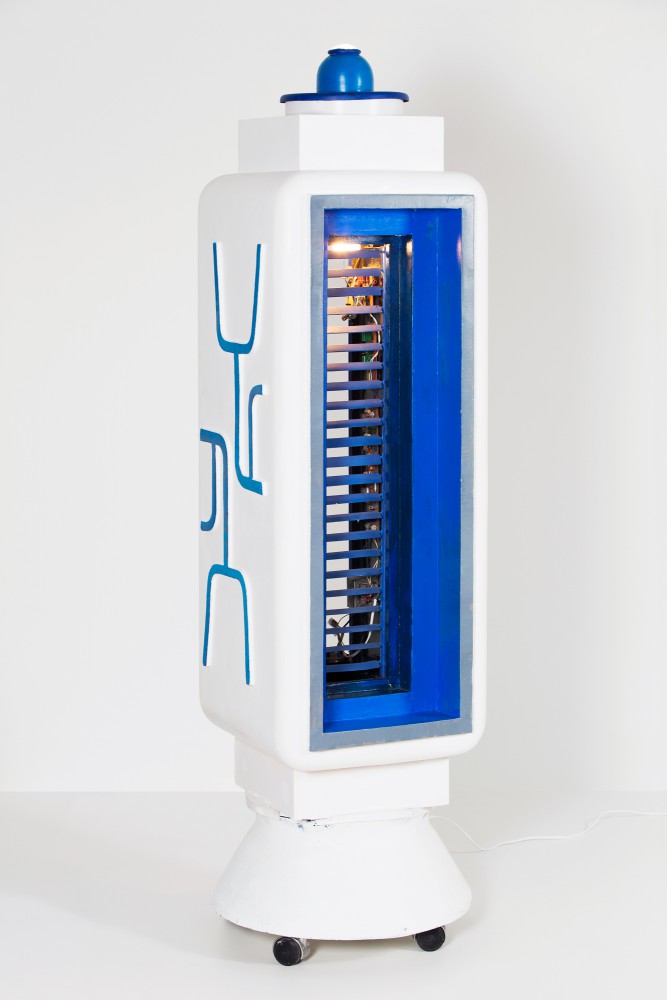
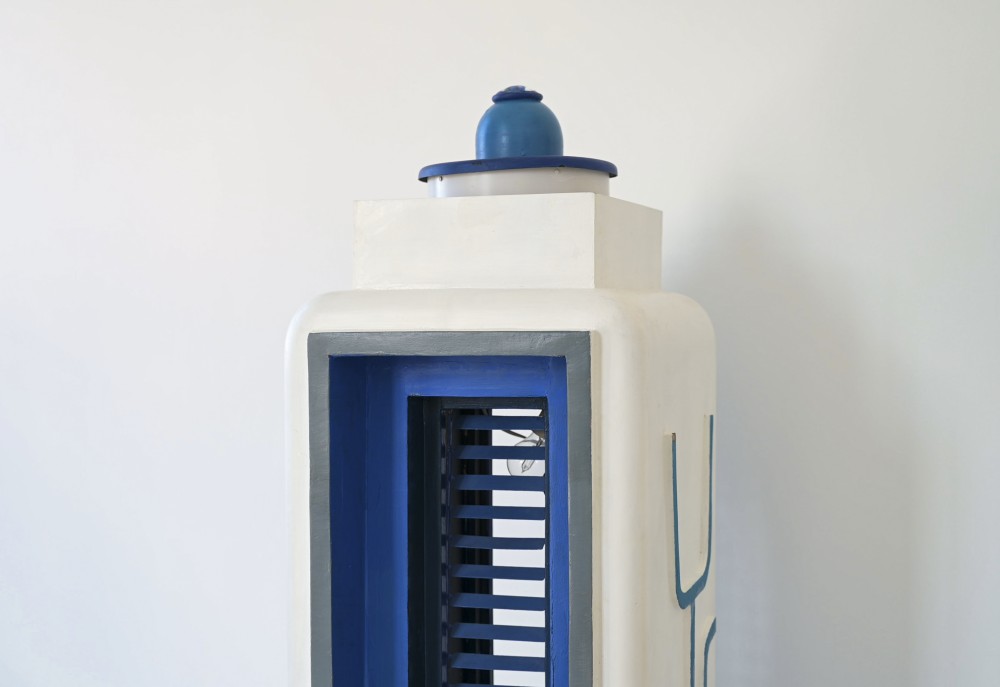

'Light Object 134B'
Metal, glass, light fixtures 143×58×58cm 2023
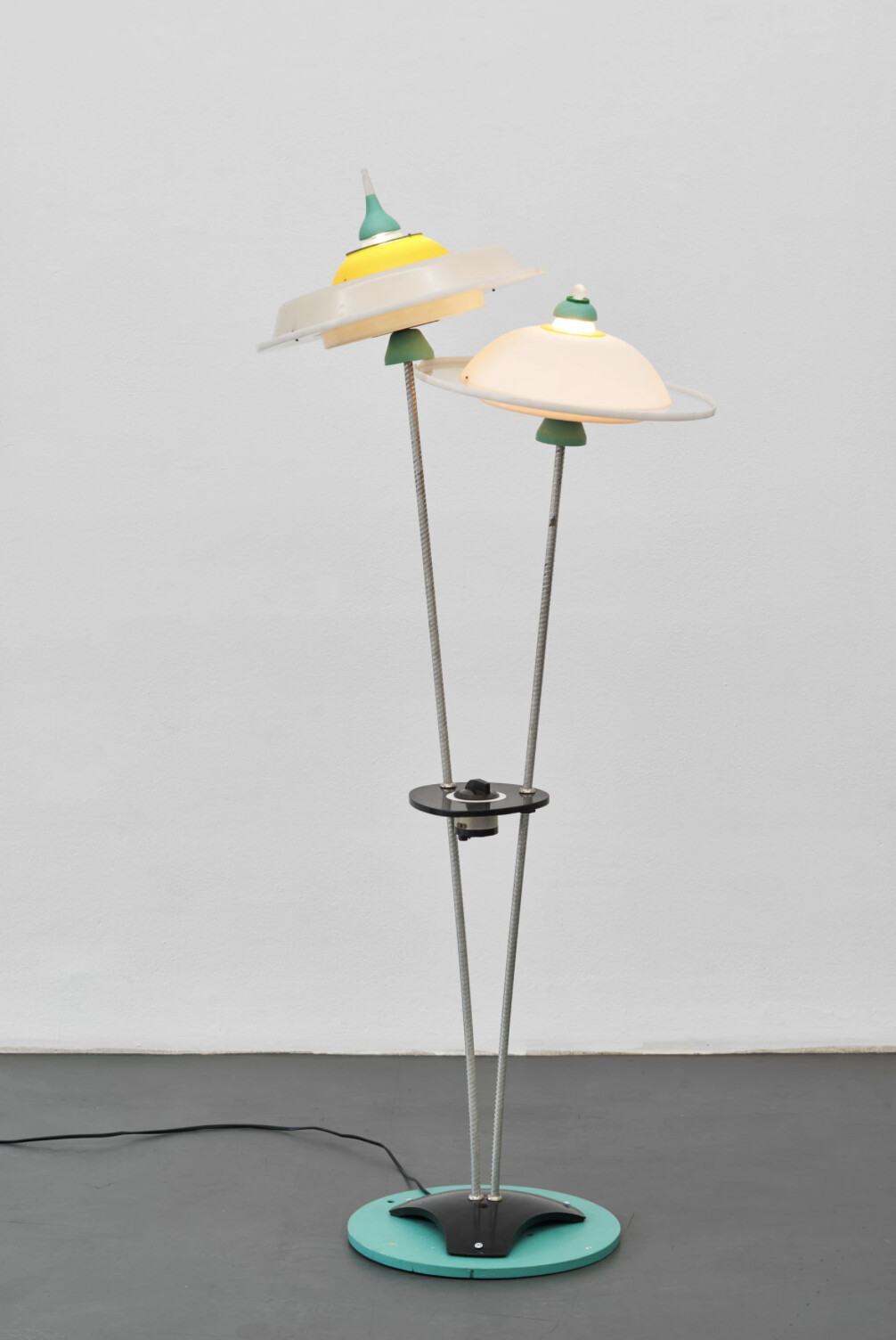
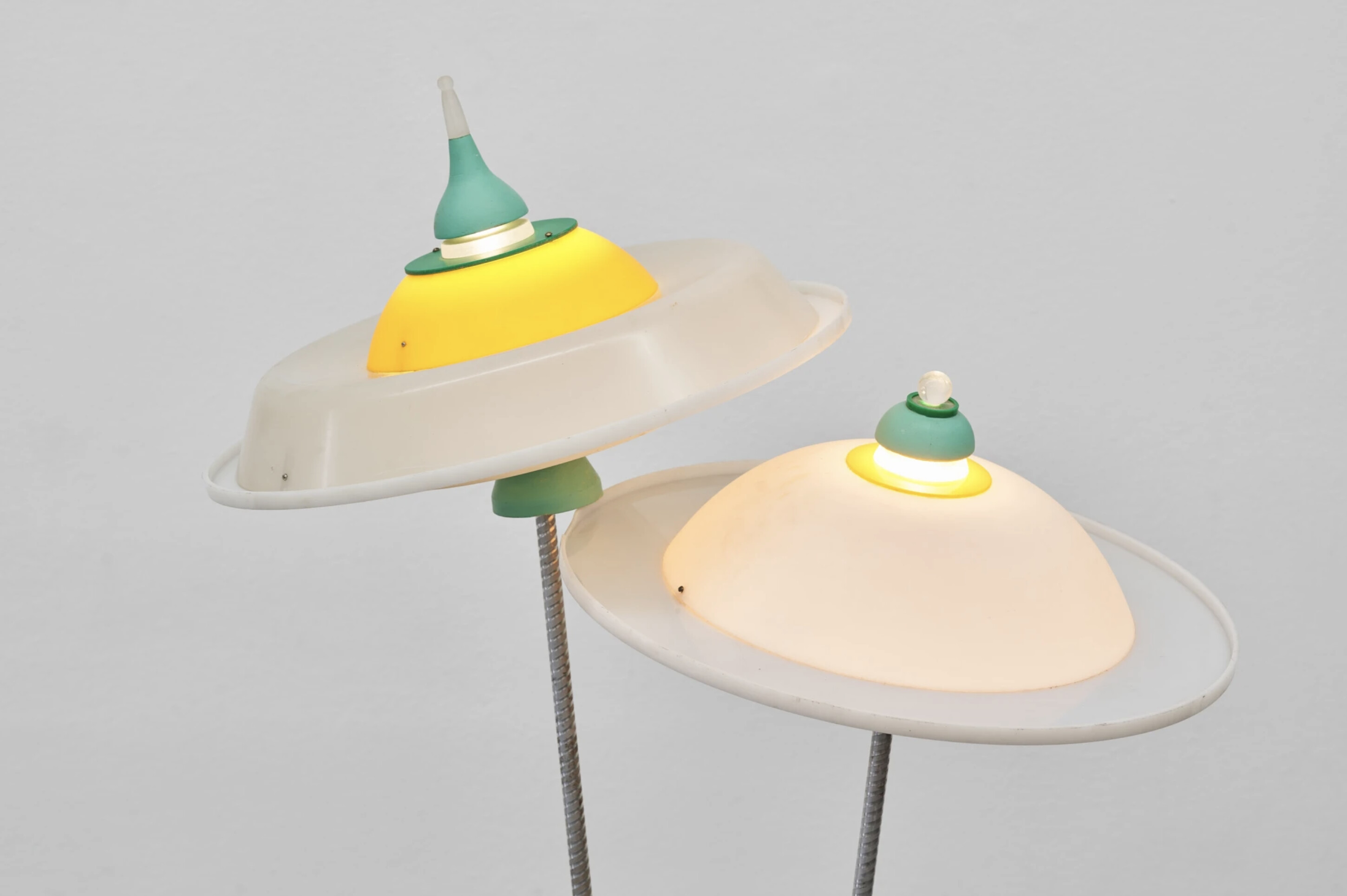
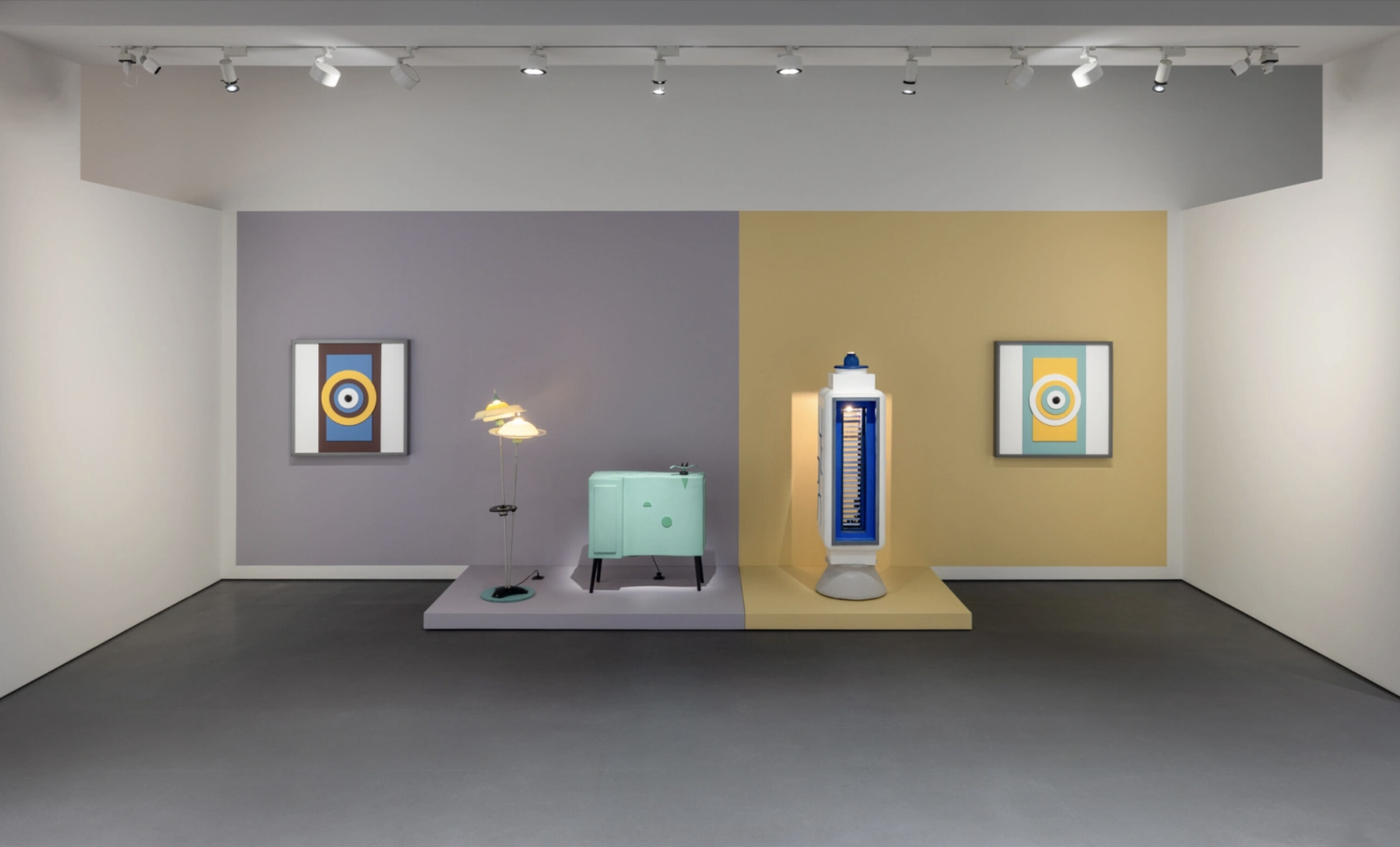
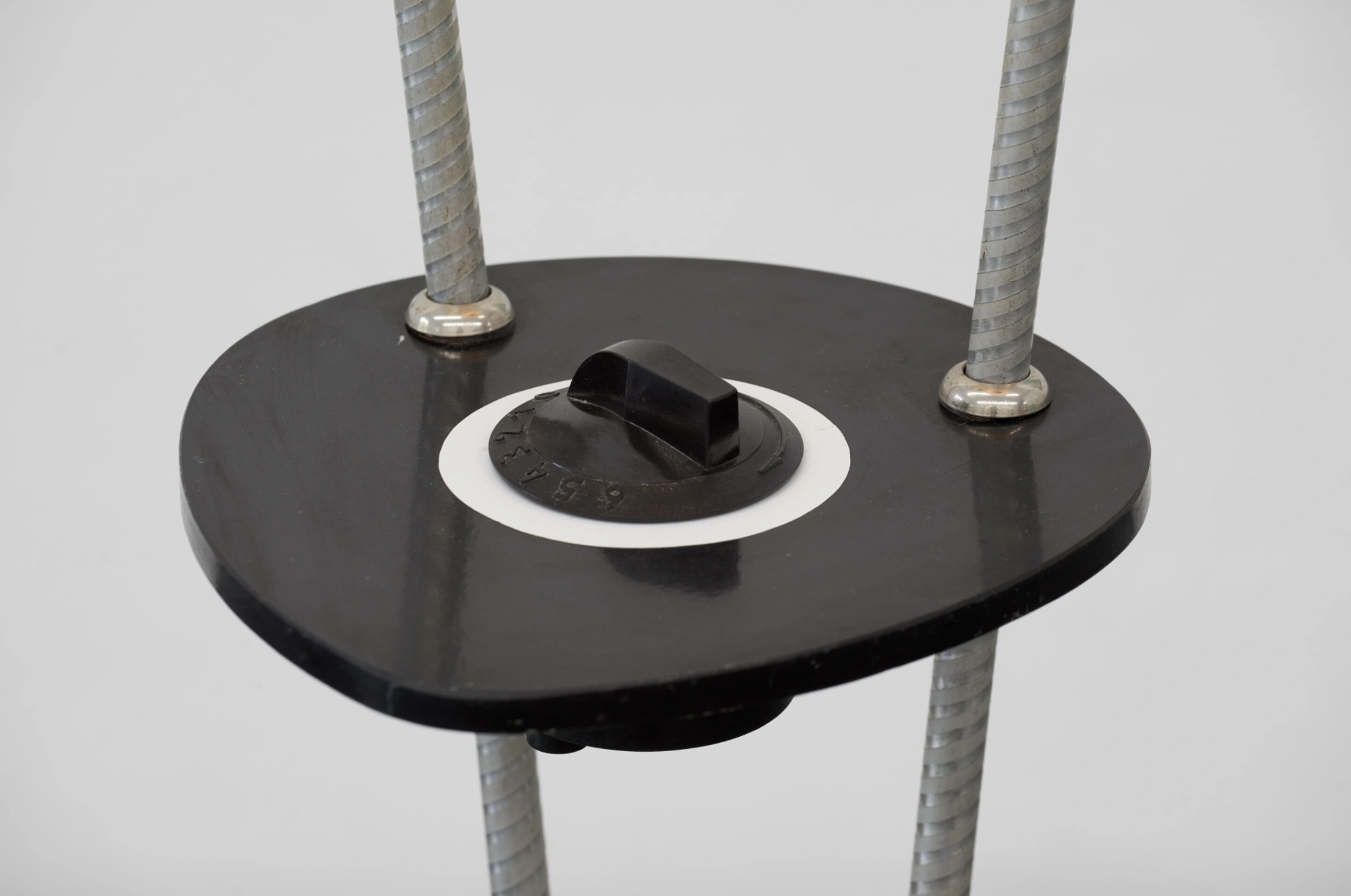
installation views
View: ,A pioneering figure in Estonian art history, Kaarel Kurismaa is best known for his kinetic art works, sound installations, and large-scale public commissions. Bright and playful at first sight, his sculptures sometimes resemble objects one might expect to encounter in fairytales or dreams where a wardrobe can speak and household items dance. Generally constructed from readymade materials, Kurismaa’s works seem perfectly suited to feature in animated films or fantastic plays. Yet their humorous and whimsical presence also has an uncanny quality, evoking childhood memories and moments of emotional urgency. Similar to the way shapes can morph in twilight, Kurismaa’s kinetic sculptures appear to hover on the brink of transformation: circles can become eyes, delicate rotating protrusions evoke limbs, and the work’s sounds evoke utterances.
Kaarel Kurismaa is the first and most prominent sound art and sound installation artist in Estonia. A preeminent figure in kinetic art, his practice also encompasses painting, animation, public space monumental art and stage installations. Following his studies at Tartu Art School in late 1950s, Kurismaa entered the monumental painting department at the State Art Institute in 1965. Kurismaa’s working as an artist-decorator for the Tallinn Department Store brought him into contact with a plethora of readymade materials and forms, as well as giving him a platform to experiment. Having produced his first kinetic object in 1966—the first known kinetic object in Estonian art history—Kurismaa, in the 1970s increasingly influenced by Pop Art, continued to combine and reuse readymade materials, working around the limited access to consumer products in the USSR. The artist was also influential in Estonian new music scene throughout the decade, collaborating with the cult progressive rock group Mess and producing stage design for their performances. From the late 1970s, Kurismaa worked on animated children’s films, painting, and public commissions, realizing several kinetic and sound objects during the 1980s, though some of them have since been since demolished or lost. He resumed his focus on sound in the 1990s, concentrating on creating site-specific installations interacting with space using visual and acoustic means.
